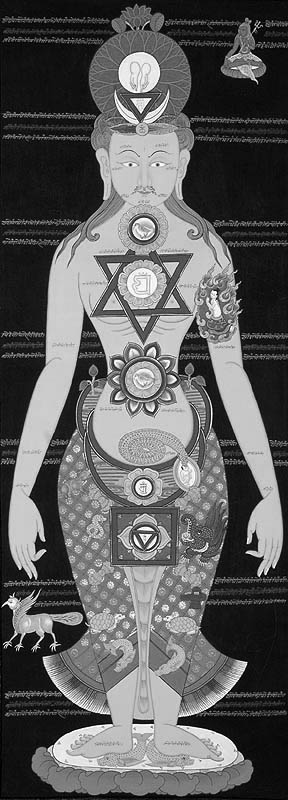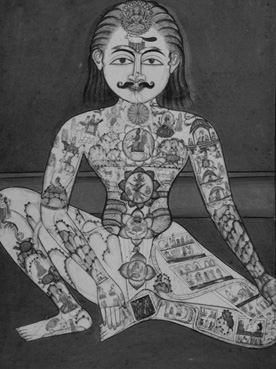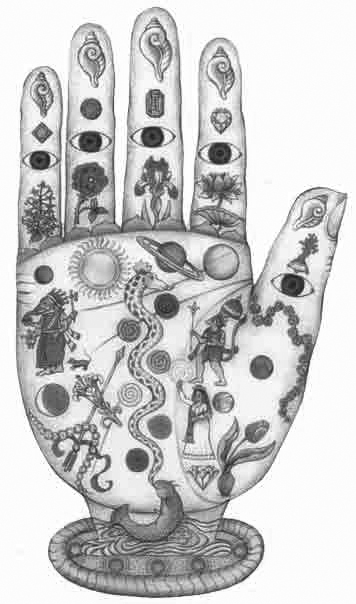
Kundalini, as described in the scriptures, rests in the form of a small snake curled three and a half rounds within the base chakra (also known as the Muladhara), which is located in the sacrum. (Some schools say it is in the coccyx, while others say the perineum; we have to take in account that different schools of thought differ on the exact location of the base chakra.) Vedic phenomenology affirms that the arousing of the Kundalini is related to an inner magnetic energy that the yogi gradually learns to manifest. For a true yogi, Kundalini is a sacred gift, a doorway into the supreme Realization. One gains entry through that portal by gradually becoming aware of the hidden workings of the unconscious mind

As Carl Jung stated in The Psychology of Kundalini Yoga,
“To activate the unconscious means to awaken the Divine, the Devi, Kundalini – to begin the development of the supra-personal within the individual in order to kindle the light of the gods.”

Kundalini has been given various names in different religions, and is referred to in many distinct ways. Sufis, when they swirl and fall to the ground in ecstasy, are experiencing Kundalini manifestations. Quakers describe some of the symptoms of spiritual awakening as ascending electric tingling or vibrations; this is identical to descriptions of the rising of the Kundalini. Buddhists in India and Tibet are quite familiar with Kundalini energy, and harness it through practices known as Tumo to generate inner heat that allows them to survive in the low temperatures of the Himalayan Mountains. Taoists also use this energy in meditation, and martial artists try to awaken it through the Kiap (scream). Advanced Tai Chi practitioners consciously move this energy through their meridians during their practice. Jews experience it during their torso-rocking prayer. Eastern Orthodox Christians portray in detail the symptoms of Kundalini awakening, calling it “the quivering.”

According to yogic belief, when the Kundalini awakens, it rises from the Muladhara chakra up through the inner spinal canal (Sushumna), and on its way to the top of the head, it purifies and illumines each of the chakras within the spinal column. When it finally reaches the seventh chakra, the thousand-petaled Sahasrara at the crown of the head, the Kundalini energy causes that chakra to blossom, and in that moment the Kundalini’s blessed journey finally culminates in full Enlightenment for the yogi.
During yoga practice, as the rising Kundalini touches and gradually awakens every psycho-spiritual center, mystical powers (siddhis) will begin to develop in the yogi. Virtually all sacred texts, however, portray siddhis as a hindrance, a dangerous temptation; they go to considerable lengths to convince practitioners to shun them. Neither yoga masters, Self-realized Gurus, New Age writers or even authors in the field of Transpersonal Psychology recommend employing any of these powers, without the direct supervision of someone who has already mastered the path to completion. The problem is that the use of siddhis almost always increases the ego, and the true goal of yoga is the eradication of ego, not its enhancement. We are not practicing yoga in order to become more powerful than others, but to completely destroy the illusion of ‘I’ and ‘other’ and realize the supreme Self, which pervades and transcends all.

It is of utmost importance, therefore, that we do not practice yoga as a means to gain siddhis, or as some kind of competition. Nor should we try to evaluate the spiritual development of others exclusively by considering the skills they may have gained through yoga practice, or by any kind of charismatic or spiritual power they might have. Spiritual advancement in others can really only be measured by a spiritual Master. We can see our own development to some extent by comparing the duration of thought-free gaps which come to us, or by an increase in the amount of peace we experience, or the depth of the process of depersonalization we are undergoing. It can also be said that real spiritual advancement may only be accurately measured by the level of one’s humility.

As a path to full awakening, Yoga encourages practitioners to first practice asanas, gently and carefully, and gradually include retention of breath and bandhas (yogic body locks) along with the asana practice. This is quite safe, and will gradually prepare the physical and astral bodies for the great ascension of Kundalini energy, and make the Enlightenment process sweet, steady and blissful.
Pranayama and mudras are more complicated to practice, and are potentially risky, and should therefore be practiced only with an experienced guide and with utmost care. This third volume of the Yoga Adityam series gives a detailed presentation of pranayama techniques, the assumption being that those who have reached this volume will already have a Yoga teacher, and will be physically and psychologically prepared to begin the practice of pranayama.